
Extending the path counting to three dimensions
- Subject:
- Applied mathematics
- Mathematics
- Material Type:
- Lesson
- Provider:
- Khan Academy
- Author:
- Sal Khan
- Date Added:
- 11/16/2016

Extending the path counting to three dimensions

Saving Earth from becoming a mushroom farm.

Do not watch before Blue Forehead Room. THIS IS THE SOLUTION!
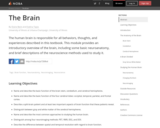
The human brain is responsible for all behaviors, thoughts, and experiences described in this textbook. This module provides an introductory overview of the brain, including some basic neuroanatomy, and brief descriptions of the neuroscience methods used to study it.
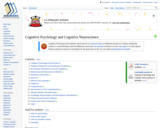
Cognitive Psychology is a psychological science which is interested in various mind and brain related subfields such as cognition, the mental processes that underlie behavior, reasoning and decision making.

Students learn about complex networks and how to represent them using graphs. They also learn that graph theory is a useful mathematical tool for studying complex networks in diverse applications of science and engineering, such as neural networks in the brain, biochemical reaction networks in cells, communication networks, such as the internet, and social networks. Topics covered include set theory, defining a graph, as well as defining the degree of a node and the degree distribution of a graph.

This presentation provides an overview of the existing treatment available for treatment of obesity. Genetic studies have revealed that the genes contributing to development of obesity is mainly located in the brain, therefore it would be logical to tro to target the brain when pursuing drugs for the treatment of obesity. However it’s not that simple.
Course responsible: Associate Professor Signe Sørensen Torekov, MD Nicolai Wewer Albrechtsen & Professor Jens Juul Holst

Fun word problem that is almost a brain teaser.

The perfect logicians are at it again.
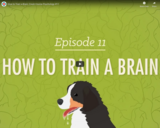
The video resource "How to Train a Brain - Crash Course Psychology #11" is included in the "Psychology" course from the resources series of "Crash Course". Crash Course is a educational video series from John and Hank Green.

Students learn about complex networks and how to use graphs to represent them. They also learn that graph theory is a useful part of mathematics for studying complex networks in diverse applications of science and engineering, including neural networks in the brain, biochemical reaction networks in cells, communication networks, such as the internet, and social networks. Students are also introduced to random processes on networks. An illustrative example shows how a random process can be used to represent the spread of an infectious disease, such as the flu, on a social network of students, and demonstrates how scientists and engineers use mathematics and computers to model and simulate random processes on complex networks for the purposes of learning more about our world and creating solutions to improve our health, happiness and safety.

How to get correct advice when you can only ask one question from either a liar or a truth-teller (when you don't know who is what)
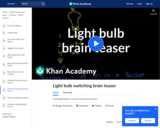
Turning light bulbs on and off.

The video resource "Meet Your Master: Getting to Know Your Brain - Crash Course Psychology #4" is included in the "Psychology" course from the resources series of "Crash Course". Crash Course is a educational video series from John and Hank Green.

Vision is the primary sense of many animals and much is known about how vision is processed in the mammalian nervous system. One distinct property of the primary visual cortex is a highly organized pattern of sensitivity to location and orientation of objects in the visual field. But how did we learn this? An important tool is the ability to design experiments to map out the structure and response of a system such as vision. In this activity, students learn about the visual system and then conduct a model experiment to map the visual field response of a Panoptes robot. (In Greek mythology, Argus Panoptes was the "all-seeing" watchman giant with 100 eyes.) A simple activity modification enables a true black box experiment, in which students do not directly observe how the visual system is configured, and must match the input to the output in order to reconstruct the unseen system inside the box.
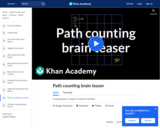
Counting paths in a square

Building on their understanding of graphs, students are introduced to random processes on networks. They walk through an illustrative example to see how a random process can be used to represent the spread of an infectious disease, such as the flu, on a social network of students. This demonstrates how scientists and engineers use mathematics to model and simulate random processes on complex networks. Topics covered include random processes and modeling disease spread, specifically the SIR (susceptible, infectious, resistant) model.

Psychology is designed to meet scope and sequence requirements for the single-semester introduction to psychology course. The book offers a comprehensive treatment of core concepts, grounded in both classic studies and current and emerging research. The text also includes coverage of the DSM-5 in examinations of psychological disorders. Psychology incorporates discussions that reflect the diversity within the discipline, as well as the diversity of cultures and communities across the globe.Senior Contributing AuthorsRose M. Spielman, Formerly of Quinnipiac UniversityContributing AuthorsKathryn Dumper, Bainbridge State CollegeWilliam Jenkins, Mercer UniversityArlene Lacombe, Saint Joseph's UniversityMarilyn Lovett, Livingstone CollegeMarion Perlmutter, University of Michigan


This is a link to a published study (pdf) on the effects of type 2 diabetes on various types of brain aging in elderly men. The Honolulu-Asia Aging Study was funded by the NIH. CITATION: Kork, E.S.C., White, L.R., Scheltens, P., & Launer, L.J. (2006). Brain aging in very old men with type 2 diabetes. Diabetes Care, 29, p. 2268-2274.